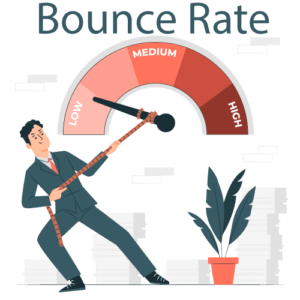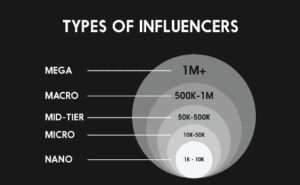
You can’t know where you stand in your industry without conducting a competitor analysis, regardless of whether you’re a well-established company or a start-up with less than a year of experience. Considering that 80% of the U.S. population now does at least some of their shopping online shopping, your digital rivals may be the most formidable you face. However, you can easily keep up with the competition using search engines and social networking sites.
We’ve put together this manual to help you analyze your digital competitors like a pro.
What Exactly Is a Competitor Analysis?
First things first: a basic definition of competitor analysis. Competition analysis involves gathering information on and evaluating existing businesses’ marketing and operational aspects in a specific market.
It is common practice to do a competitor analysis to ascertain rival businesses’ relative strengths and weaknesses, establish your firm’s position in the market, find market niches, and gauge your ability to fill them.
The Importance of Conducting Constant Competitor Analysis

Even though your main competitors are likely to stay the same, their strengths and market state are always changing. This means that you will need to change your strategy often.
The most important reasons to keep tabs on your competitors are as follows:
To evaluate current performance
You have a good idea of which channels work best thanks to your analytics, but what if the competition has found a way to do even better? You should know this.
Aiming to catch up with the latest market and industry trends
The only suitable way to be ready for the annual ups and downs in demand is to keep a sharp eye on the market and competitors. Try to maintain a state of heightened awareness.
Gain insight into cutting-edge best practices and common pitfalls
It can be more cost-effective to watch as competitors explore new channels than to risk your own resources. Use the mistakes of other businesses as a learning tool.
Improving your marketing strategy
By keeping an eye on your competitors’ digital marketing efforts, you can find out useful things about them, like when they release a new product, and get ideas for how to grow your own business.
Modifying your aims
To stay competitive as the online market changes, you might need to change how you work and your goals.
Analysis of the Competitors in 6 Easy Steps
Find out how to conduct thorough and effective competitor analysis. Everything your competitors do on the digital marketing front can be monitored and studied, from their paid efforts on Facebook, LinkedIn, YouTube, and Google Ads to their organic performance measured by SEO and Content standards.
Recognize Your Competitors
You should start competitor analysis by picking the competitors you’ll examine. Both direct and indirect rivals, or companies that offer a similar product or service to your target market, should be considered in any thorough competition study. You should watch competitors who provide a different service but aim to solve the same problem as your ideal customer persona.
You can learn more about your true competitors and their most effective techniques using analytical tools like Semrush, Ahrefs, SimilarWeb, and the Facebook Ad Library.
You can study your top three competitors in organic search and your top three competitors in paid search separately, or you can focus on five competitors and look at their digital marketing across all channels and platforms.
Analyze How Rivals Are Using Social Media Ads

Investigating what works for competitors in social media marketing is a good first step before you create your plan. Look them up on social media and see if they have a YouTube channel or TikTok account.
You may search for any current ad campaigns on Facebook by keyword or company name in the Ad library.
Usually, businesses would run lead ads on social media sites like Facebook and LinkedIn to send people to landing pages made just for them.
Examine your competitors' Google Ads
Determining what your rivals are doing to use PPC and how you can do the same results from competitor analysis. Google’s Keyword Planner is a free service that anybody can access, regardless of whether or not they are running paid advertising. However, they must sign up for a Google Ads account to access the full suite of features. Use the Keyword Planner to see how many people search for specific keywords and how much it typically costs to advertise on the selected network. Find out what people are searching for in your business so you can allocate your marketing budget more effectively.
You can use Ahrefs to see what search terms your competitors spend on and which landing pages bring in the most traffic.
Semrush is another tool that professionals like to use. It has a 7-day free trial lets you use all of its main features.
Simply entering a competitor’s URL into Semrush’s Advertising Research section will reveal their ad tactics and spending habits. Ad copy, real-time advertisements, lucrative PPC keywords, and spending can all be read and tracked. Everything you learn here can be used immediately in your paid advertising, from optimized landing pages to the way campaigns are set up and the keywords you choose.
Tools for Analyzing Organic Competitors' Performance
As part of the competitor analysis, SEO experts recommend running crawlers, identifying top-performing pages and keywords, setting up visibility reports, keeping an eye out for emerging SEO trends, and manually following the Expertise-Authority-Trust signals to monitor the organic growth of your competition.
Crawlers and spiders can examine your website and the websites of your competitors. One tool, Screaming Frog, can be used to identify any number of technical problems that reduce a page’s rank in Google. Find out if a page has any duplication or sparse material and the health of every link leading to and from it.
With Ahrefs, you can identify the high-traffic pages of competitors and the keywords they use to measure their organic performance. Examining these sites can also show how well the information answers the question the searcher set out to answer.
Without a method to assess the popularity and complexity of keywords, no SEO toolkit would be complete. Review a comparison of the best SEO software to find the one that meets your requirements. Then, search to discover where your rivals stand and how they use content to target trophy keywords.
So, what else is there to think about? Keeping your site quick, mobile-friendly, and error-free is essential. Google provides both a speed test and a mobile friendliness test, which are free.
The content that a company puts out and promotes directly impacts the brand’s organic success. You should also look into your competition from a content perspective.
Consider Your Competitors' Content Marketing Strategies

Manual research and work make up the most of what would otherwise be an automated process when investigating the content marketing tactics of your competitors. At this stage, you should check out competing websites to learn about the contents and forms they employ and how you may improve upon those. It is essential to go back over the following:
- What’s on the main navigation pages?
- How many sites on the site are connected?
- How do your rivals highlight their products’ or services’ advantages and qualities?
- How they market their content and what formats they employ
- Gated and non-gated content resources
- Primary reference points
Only extraordinarily pertinent and helpful page content can solve your readers’ problems and alleviate their frustrations with your topic. Any rival with such a plan would surely win over new customers and hold on to regulars.
Create a Road Map of Obstacles and Potential Solutions Using a SWOT Analysis
When performing competitor analysis, it is essential to do a SWOT competitor analysis. The SWOT analysis doesn’t need to be exhaustive. Use a SWOT analysis to map your advantages, disadvantages, chances, and threats.
As you progressed through the preceding steps of your investigation, you probably saw parallels between your competitor’s paid and organic marketing strategies. You’ll know where they excel and where you can exceed them with a fair amount of investment.
Wrap Up
You can use digital competitor analysis to develop a unique marketing approach to help you outshine the competition’s websites, ads, and social media posts. If you want to learn how we can help make your company a household name, don’t hesitate to contact our experts.

















































